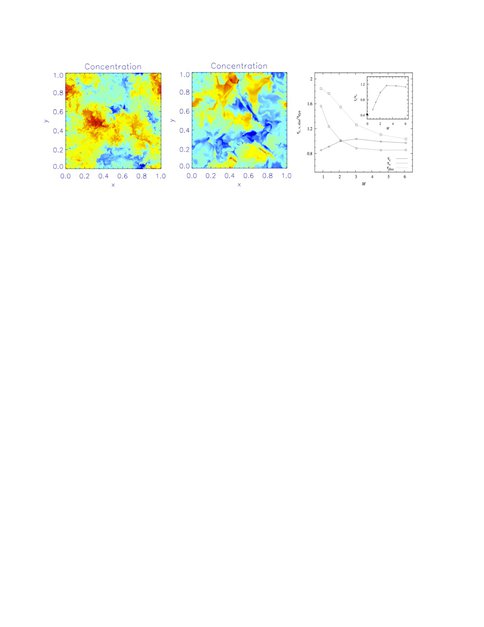2010 Annual Science Report
 Arizona State University
Reporting | SEP 2009 – AUG 2010
Arizona State University
Reporting | SEP 2009 – AUG 2010
Astrophysical Controls on the Elements of Life, Task 5: Model the Variability of Elemental Ratios Within Clusters
Project Summary
This involves a comprehensive chemodynamic study of the self-enrichment of star forming regions and its astrobiological implications. Our approach will start from the point of star formation and diligently model the subsequent production, dissemination, and accretion of 92 chemical elements, with a special focus on bioessential elements and short-lived radionucides. Our goal is to capture the full evolution over which a molecular cloud, the primary units of star-forming gas, is converted into an open cluster, the primary units of formed stars — determining the probability distribution of all elements that are important in the formation of terrestrial planets and life.
Project Progress
In the past year, our major achievements have been to develop models of molecular cloud evolution, and to undertake studies of turbulent mixing that lay the foundation for full simulations of cluster self-enrichment. We have now developed routines that can simulate a turbulent molecular cloud of arbitrary mass, which collapses gravitationally, undergoes molecular cooling, and is heated by cosmic rays. We have also added the capability to form stars, which interact gravitationally with the surrounding medium, and shed heavy elements, momentum, and energy. During the development of these capabilities, it became clear that much of the fundamental physics of mixing that was necessary to understand the variability of elemental ratios was yet to be explored. Thus we decided to apply the tools we developed to model molecular clouds to carry out the first numerical study of the mixing of heavy elements in supersonic turbulence, yielding several important results. As published in Pan & Scannapieco (2010a), and illustrated in Figure 1, these simulations showed that while the mixing of energy becomes more efficient at high Mach number, metal mixing becomes less efficient with increasing Mach number. This is because while compressible modes enhance the conversion of kinetic energy into thermal energy, it is only the solenoidal modes that are able to mix low and high metallicity material. On the other hand, we found that, like velocity mixing, metal mixing is driven by a cascade process from large to small scales, and thus the metal mixing time is inversely proportional to the length scale at which the pollutants are injected into the flow. Already these models have led to a related submitted publication on the fractal dimension of metal mixing in supersonic turbulence (Pan & Scannapieco 2010b). Over the next year they will be directly applied to interpret our full simulations of low-redshift metal enrichment.
Left: The scalar field distribution on a slice from our Mach=0.9 turbulent mixing simulation, with a linear color scale going from blue (minimum) to red (maximum). Center: A similar plot of the scalar field distribution on a slice from our Mach=6 simulation. Right: The scalar dissipation timescale, τc, the viscous dissipation timescale, τdiss, and the timescale for kinetic energy loss, τv, as functions of the Mach number. The timescales are normalized to the dynamical time τdyn, and the inset shows the ratio of τc to τv. (From Pan & Scannapieco 2010)
Publications
-
Pan, L., & Scannapieco, E. (2010). MIXING IN SUPERSONIC TURBULENCE. The Astrophysical Journal, 721(2), 1765–1782. doi:10.1088/0004-637x/721/2/1765
-
Pan, L., & Scannapieco, E. (2011). Passive scalar structures in supersonic turbulence. Phys. Rev. E, 83(4), None. doi:10.1103/physreve.83.045302
-
PROJECT INVESTIGATORS:
-
PROJECT MEMBERS:
Francis Timmes
Co-Investigator
Themis Athanassiadou
Postdoc
Liubin Pan
Postdoc
-
RELATED OBJECTIVES:
Objective 1.1
Formation and evolution of habitable planets.
Objective 3.1
Sources of prebiotic materials and catalysts

